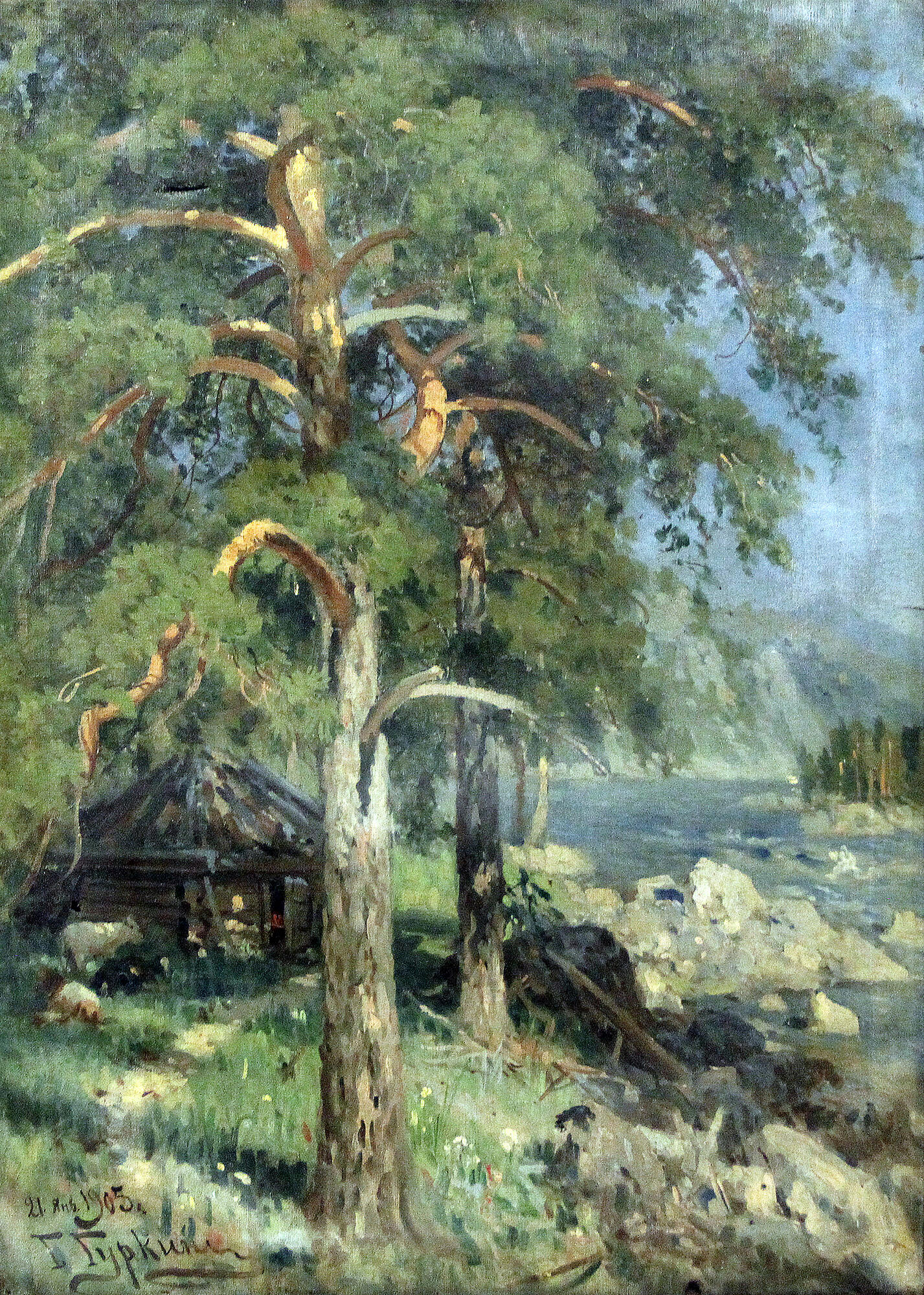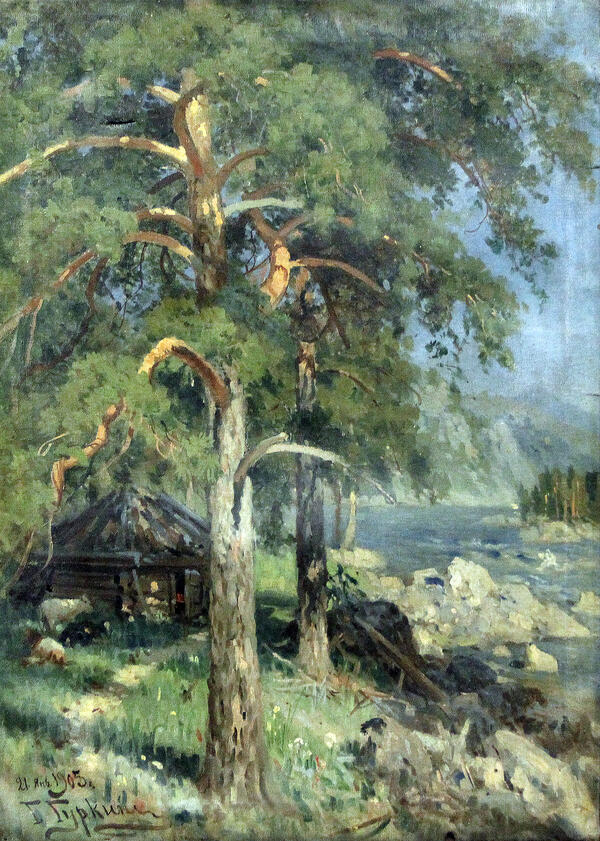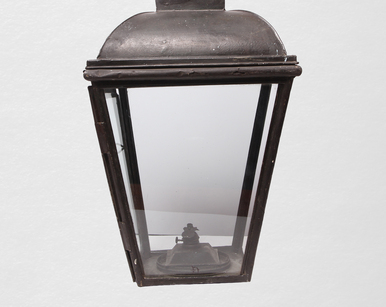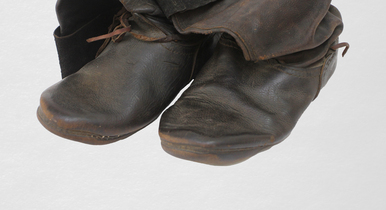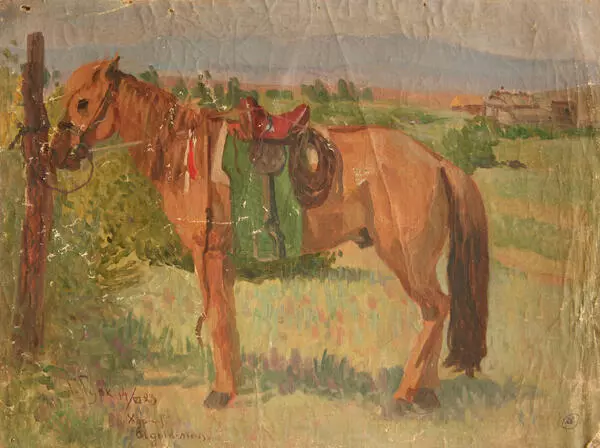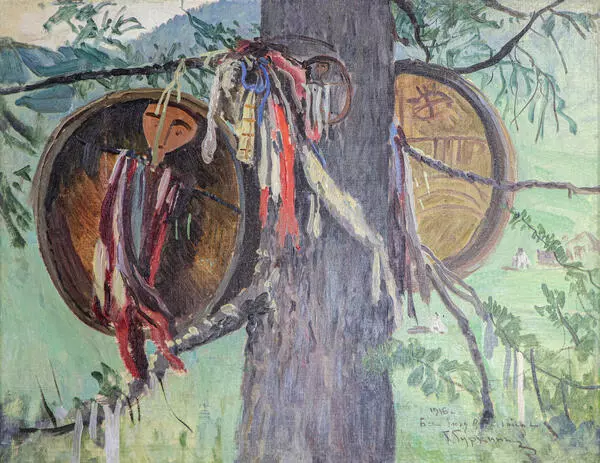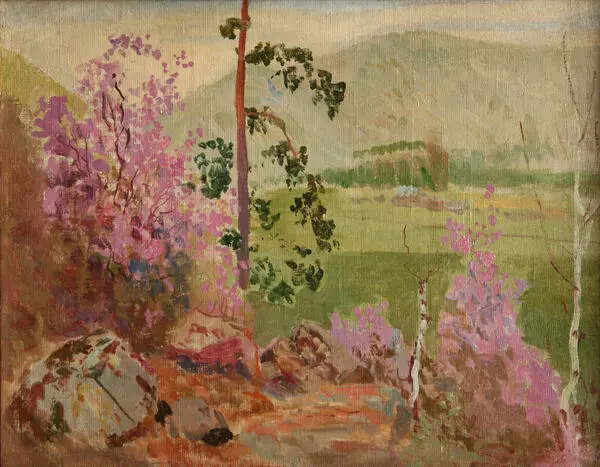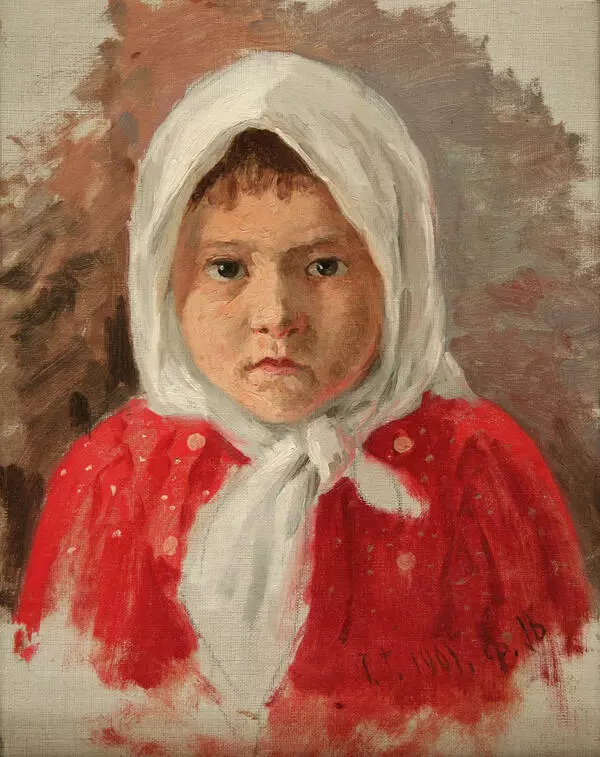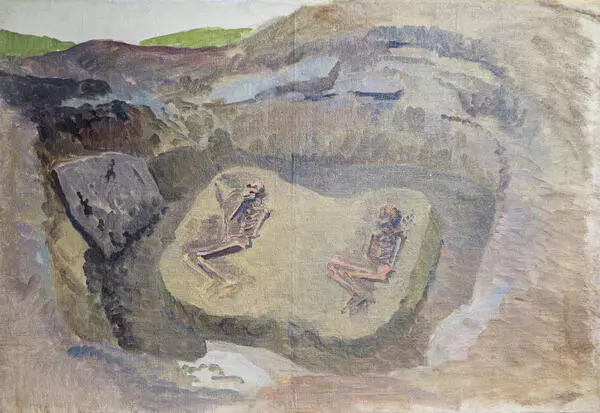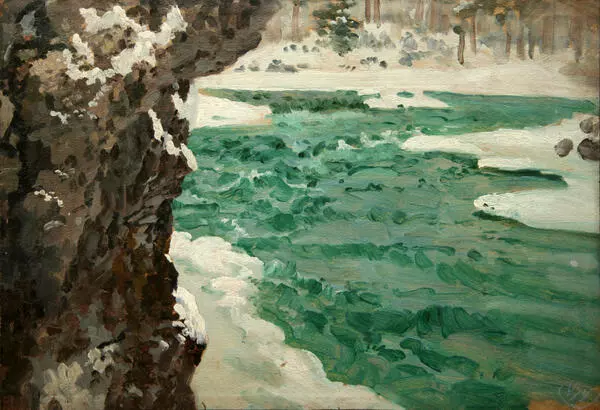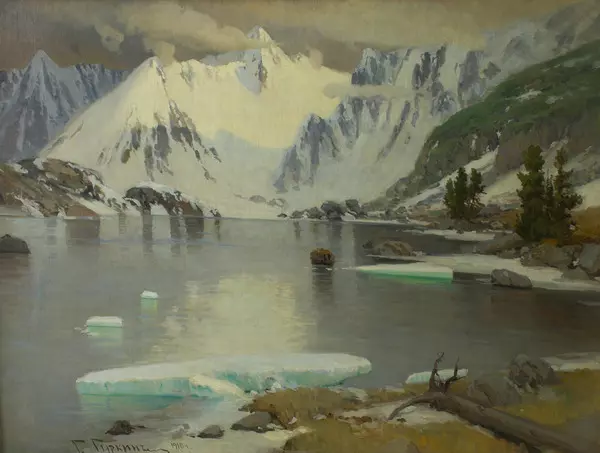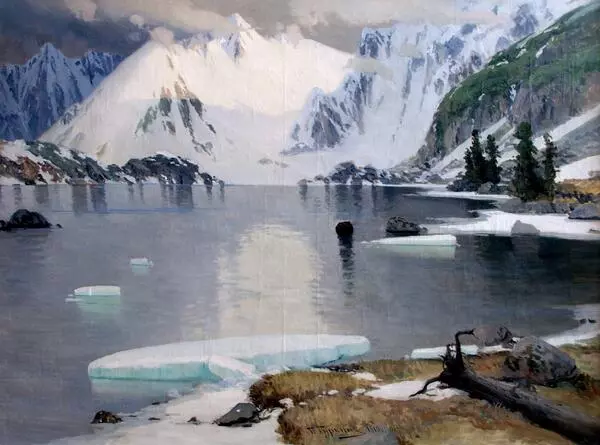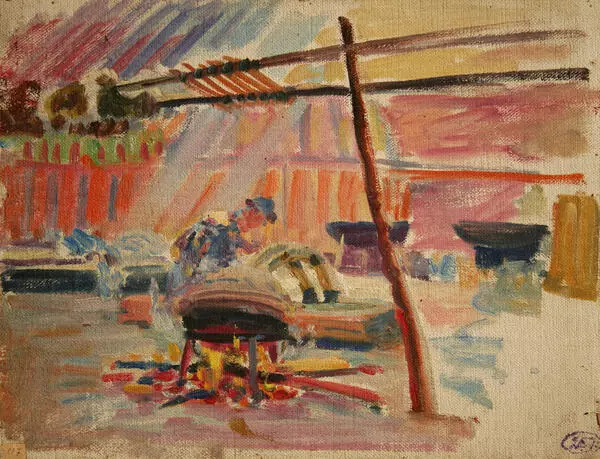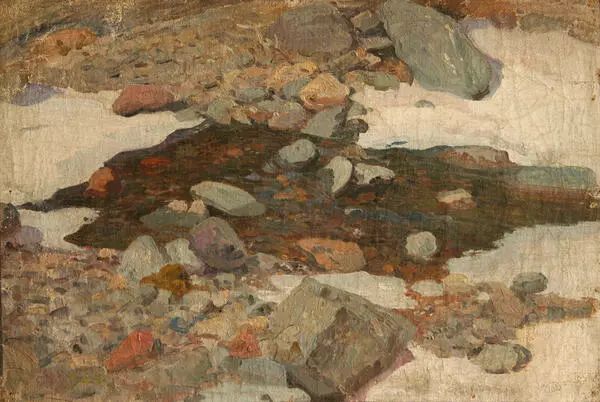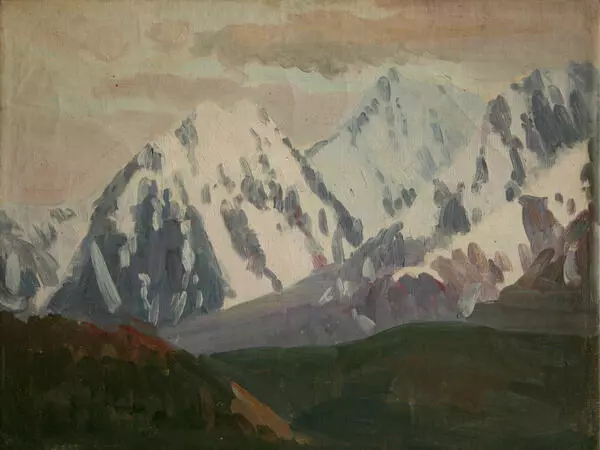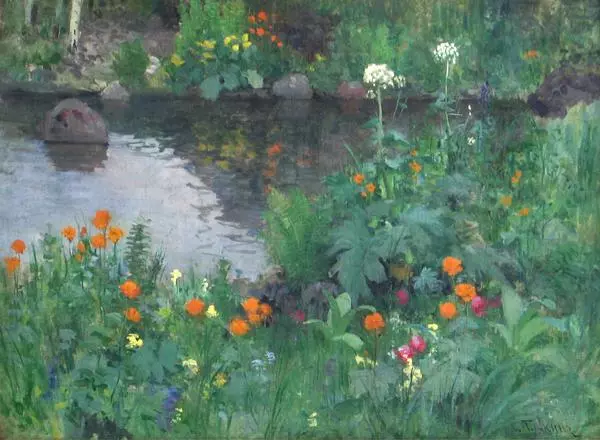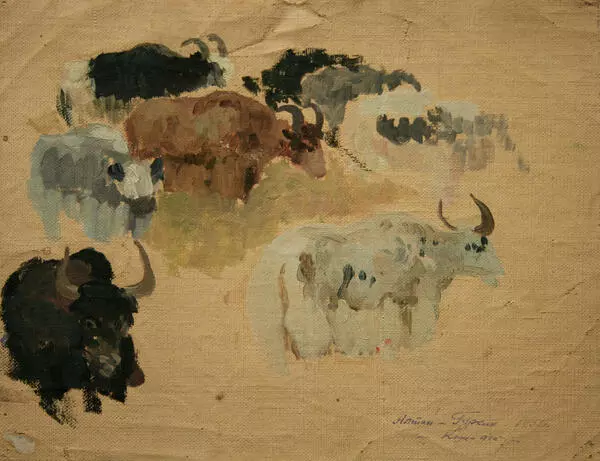The painting by Grigory Gurkin in accordance with the museum staff’s theory was originally purchased at the exhibition in 1910 for Mariinskaya Women’s Gymnasium. Later, already in the late 1940s, the caretakers of the school № 2 threw many paintings into the wood shed. This was the place where they were accidentally discovered by a young drawing and painting teacher, Pyotr Tsaplin. He needed some laths for posters, so he went to the woodshed and found the damaged paintings among a pile of wooden pieces of trash. Tsaplin brought the best-preserved canvas to the school, cleared it out from dirt and saw the signature ‘Gurkin’.
Grigory Gurkin was the first national professional artist of Altai origin. He studied at the missionary school in his native village and, during his leisure time, he often went to the icon painting studio where he ran small errands, such as grinding color and helping students to prepare boards. After finishing school, Gurkin worked as a teacher, but after a while, he realized the post was not for him, and soon, turned to icon painting.
In 1896, Gurkin met Andrey Anohin, an Altai folklorist. He is the person who introduced a young artist to modern painting. He soon became a student of Ivan Shishkin, but his apprenticeship did not last long: the famous artist died suddenly at his easel in front of his protégé.
Later, Gurkin enrolled at the Imperial Academy of Arts as a non-matriculated student in the class of Alexander Kiselev, a landscape painter. After a short period of imitating Shishkin art, Gurkin found his own way. In 1903–1905, he painted several ‘mature’ pictures.
During this period, Gurkin returned to Altai and settled in the village of Anos. It is near the popular Chemal resort nowadays. In Anos, he started working as a teacher and then he married.
In 1906–1907, the artist’s exhibition was held in Tomsk — the provincial center of Tomsk Governorate including Gorny Altai as one of its parts. This was the golden age of Siberian culture. Grigory Potanin, a Tomsk educator, managed to gather the clerisy of almost all West Siberia: writers, journalists, actors. Gurkin quickly became popular with the community. In 1906–1915, the artist toured with the exhibitions all over Siberia and became a recognized classic of Siberian painting.
Grigory Gurkin was the first national professional artist of Altai origin. He studied at the missionary school in his native village and, during his leisure time, he often went to the icon painting studio where he ran small errands, such as grinding color and helping students to prepare boards. After finishing school, Gurkin worked as a teacher, but after a while, he realized the post was not for him, and soon, turned to icon painting.
In 1896, Gurkin met Andrey Anohin, an Altai folklorist. He is the person who introduced a young artist to modern painting. He soon became a student of Ivan Shishkin, but his apprenticeship did not last long: the famous artist died suddenly at his easel in front of his protégé.
Later, Gurkin enrolled at the Imperial Academy of Arts as a non-matriculated student in the class of Alexander Kiselev, a landscape painter. After a short period of imitating Shishkin art, Gurkin found his own way. In 1903–1905, he painted several ‘mature’ pictures.
During this period, Gurkin returned to Altai and settled in the village of Anos. It is near the popular Chemal resort nowadays. In Anos, he started working as a teacher and then he married.
In 1906–1907, the artist’s exhibition was held in Tomsk — the provincial center of Tomsk Governorate including Gorny Altai as one of its parts. This was the golden age of Siberian culture. Grigory Potanin, a Tomsk educator, managed to gather the clerisy of almost all West Siberia: writers, journalists, actors. Gurkin quickly became popular with the community. In 1906–1915, the artist toured with the exhibitions all over Siberia and became a recognized classic of Siberian painting.
